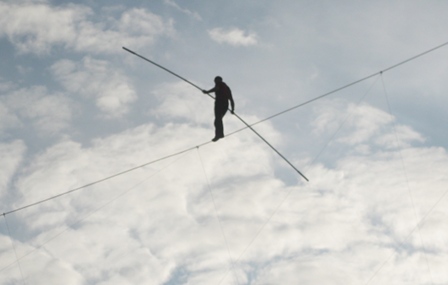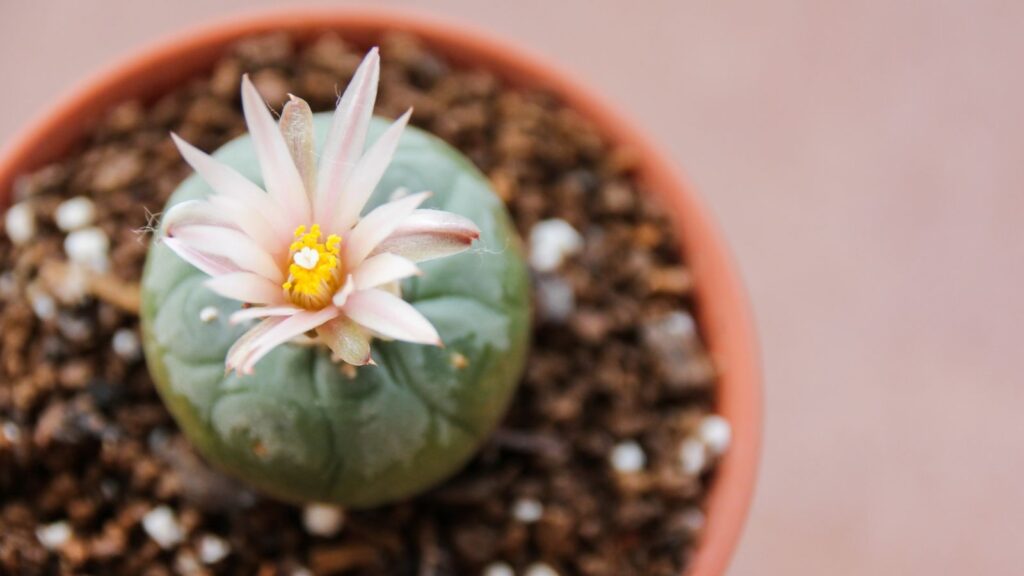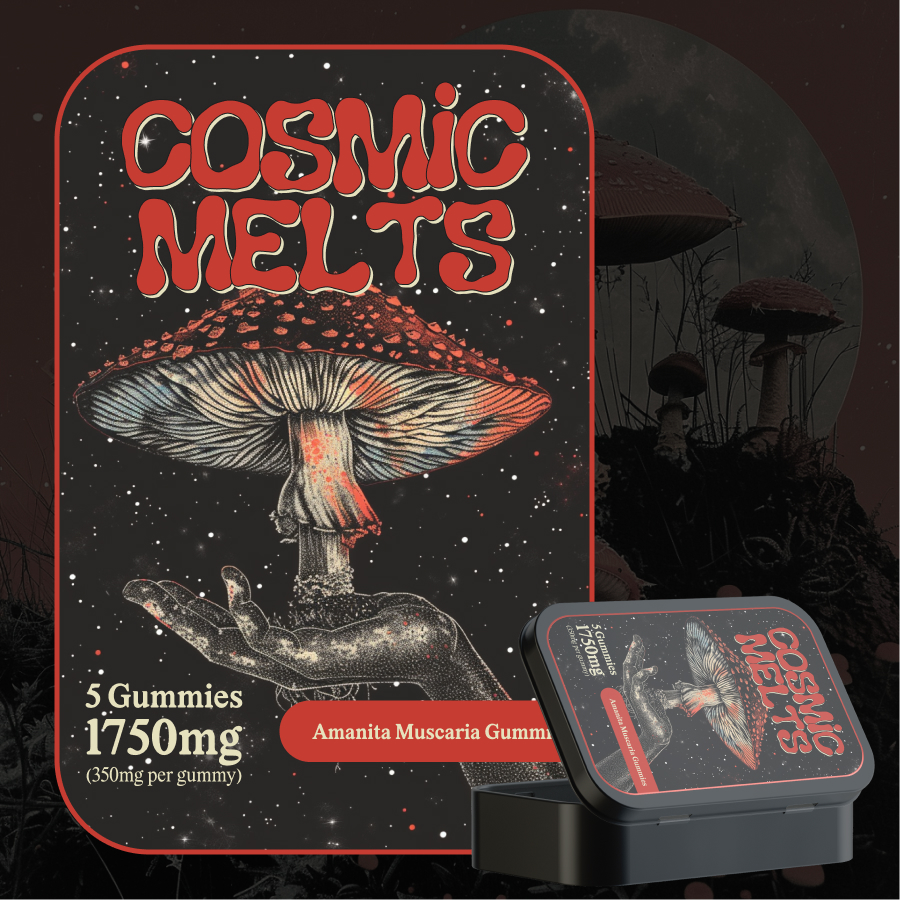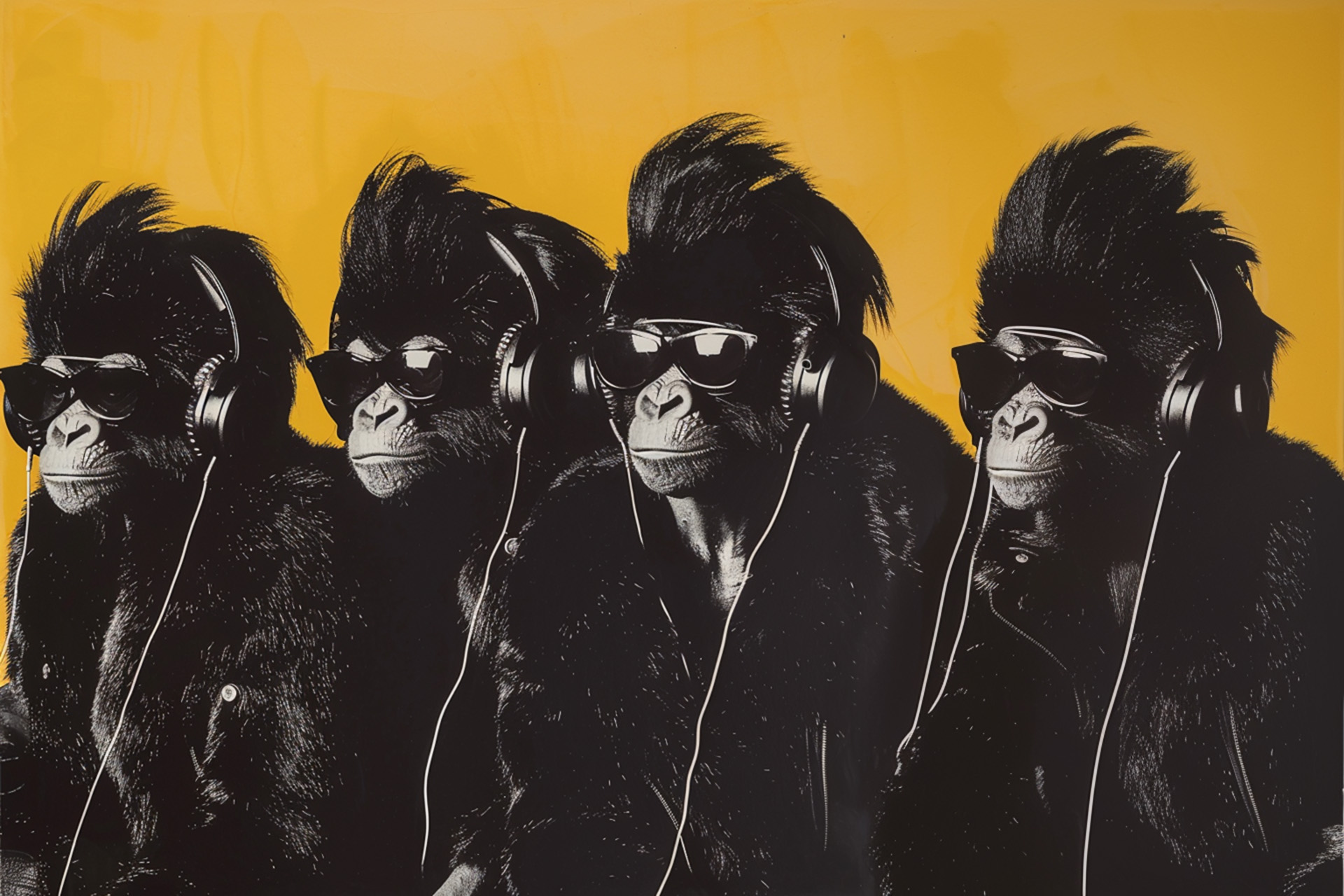Jeffrey J. Kripal is an academic edge-walker, one of the most unusual and compelling scholars of religion working in America today. Rather than study mainstream religions from his perch as head of the department of religious studies at Rice University, Kripal focuses on the more informal modern world of the “spiritual but not religious” crowd, an increasingly popular orientation that Kripal calls the “religion of no religion.” As such, his interests include weird stuff like superhero comics, the paranormal, and the tantric undercurrents of Esalen and the human potential movement. Lucky for us, Kripal is also one of those rare scholars whose books are not only clear but engagingly written and even a little goofy at times. Moreover, Kripal is one of the few academics willing to speak and write openly about his own mystical experiences.
Kripal’s first book, 1998’s Kali’s Child, looked at homo-erotic and tantric dynamics in the life and spirituality of Bengal’s wild nineteenth-century saint Ramakrishna. Though Kripal looked at the guru through the secular lenses of psychoanalysis and sociology, he did not try to reduce the spiritual to the materialist but instead saw them as playing off one another — a “tantric” stance that was informed in part by an ecstatic Kali-inspired mystical download he experienced while doing research in Calcutta. Though very well received by scholars, Kali’s Child proved extremely controversial outside of academia, as Hindu fundamentalists sought to have the book banned and Kripal’s career destroyed.
Kripal then followed the flow of the mystery, writing books about the mystical experiences of scholars of mysticism and the gnostic dimension of the study of religion. Kripal then wrote Esalen, the definitive history of the Esalen Institute, where he continues to work closely with Michael Murphy on the evolutionary intersections of consciousness, culture, and the body. Through Esalen, Kripal came into a deeper appreciation of human and paranormal potential, an interest that he explored in last year’s Authors of the Impossible, an important and entertaining study of some under-sung scholars of the paranormal, including UFO researcher Jacques Vallee and the great Charles Fort. For Kripal, the paranormal is simply the form the sacred takes in our secular world. And according to his latest book, Mutants and Mystics, this esoteric story of human potential is directly mirrored in the pop culture lore of superhero comic books — as well as the lives of many of their most important creators.
Erik Davis: A lot of your scholarly work boils down to a basic argument: that many people throughout space and time, including scholars, have extraordinary experiences that possess powerful spiritual, religious, or cosmic implications. For some RS readers, this is kind of a no-brainer. Why is this reminder so radical in today’s academic world?
Jeffrey J. Kripal: Part of the reason is because the academic world no longer believes in experience. No, really, I’m not kidding. From the scientific materialism side, we are constantly asked to believe that we are not even truly conscious, that consciousness is an illusion, or a bit of neuronic froth. From the postmodern side, we are also asked to believe that the subject does not exist, that subjectivity is a Western ethnocentrism, that the author is dead, so to speak. I am exaggerating here. But not much.
In terms of integrating the full range of human experience back into scholarly discussion, what positive signs are you seeing?
Colleagues constantly come up to me after lectures, and at very prestigious universities, and say in so many words, “I am so happy you are saying these things.” It is not that they think, or that I think, that I somehow have the answers. It is simply that some of us are refusing to shut up about these things. We are talking about them, writing about them, querying them with the tools of the humanities and the social sciences — with literary theory, cultural anthropology, and the history of religions. My sense is that in fact most colleagues in the humanities and the social sciences are quite open to such matters personally but are reticent to “come out of the closet,” as they fear the reaction of our peers. My reply to this is simple: “But that is what tenure is for.” I do not encourage younger scholars to go here, not at least directly and so flagrantly, for the same reason.
The professional parapsychologist, stage magician, and skeptic George Hansen has inspired me here. His beautiful book The Trickster and the Paranormal is a long erudite treatment of the paranormal in the light of anthropology, literary theory, and the study of religion. He convincingly demonstrates that the paranormal is marginalized for a real reason: it is marginal, that is, it is all about the edges and gaps and conceptual abysses of our culture. It is where the structures of society and rationalism break down and enter a kind of fervent liminal or in-between zone of deconstruction, anti-structure, and, hopefully, creativity. There is also a real connection here, as with the tricksters of world mythology, to deception, fraud, and trickery. Perhaps most provocatively, George also demonstrates that to seriously engage the paranormal is to invoke it, to conjure it forth.
That also reminds me of the reticence — or refusal really — with which most people in the humanities and social sciences deal with the experiential and even ontological questions raised by entheogens. I wonder what will happen as the humanities and social sciences lose more institutional power to cognitive science and neuroscience, which certainly seems to be happening. From the perspective of the brain, drugs are very interesting. Might there be a way in which the rise of cognitive science and the turn towards the brain might also be a return towards the “wild facts” of consciousness?
I am not really sure what you are asking or saying here, Erik. If you are asking me whether I think cognitive science can get us to a deep understanding of the phenomenology of mystical experience, my answer is, “No, I don’t think so.” If you are asking me whether cognitive science can help us toward this task, say, through, bilateral models of the brain, my answer is, “Yes, I think so.” If you are asking me whether I think scientific studies of psychoactive chemicals could help us toward this same end, my answer is, “I definitely think so, but as much through the reports as through the chemistry.”
Why do you think cognitive neuroscience is so limited? Many cognitive scientists, and even some Buddhist ones like Francesco Varella, have combined a description of biological systems underlying consciousness with a non-reductive account of experience. I think, for example, of the sense of spaciousness and the loss of boundaries that many serious meditators report. There is some evidence that this profound state is correlated with the brain’s relaxation of its proprioceptive system, which orients our bodies in space and provides constant feedback on physical position. Or do those seem like non-explanations to you?
I do not want to dismiss all of this important work. I am simply pointing out that these are not real explanations, as we still lack any sense of a causal chain or mechanism between a material process and the state of awareness. I understand we can show all sorts of correlations, but correlations are not causes. I simply want us to be more humble here, that’s all. I read neuroscientists too, and it always seems to me that the very best ones are also the first to admit what we don’t know and where materialist and mechanistic models cannot take us. That seems exactly right to me. It is that kind of intellectual honestly and courage that I admire.
A lot of scholars in the humanities seem very concerned about the encroaching tide of science and technology. Beyond drawing attention to important but marginalized topics like mysticism and the paranormal, what role do you see the humanistic study of religion playing during our crazy moment of chaotic global transition?
I’m writing a textbook now on how to compare religions. I open by claiming that the comparative study of religion is the most exciting, important, radical, dangerous, and promising thing currently going on in the university, and that most of the world’s problems boil down to a failure of individuals, communities, and cultures to compare — that is, to balance human difference and sameness — in sufficiently nuanced, just, and beautiful ways. I mean that. I am not exaggerating in the least.
In terms of religions, what does comparison help us do? What might I understand by studying medieval Kabbalah and Amazonian shamanism together that I might not learn from just studying one of them?
Ideally, you might learn something about human nature — about you, about me — that is not a product of local culture or language. Max Muller, one of the founders of the comparative study of religion, took a page from the study of languages and wrote that, “He who knows one knows none.” That is to say, one cannot really understand how language works until one can set side by side many languages and figure out the deeper grammar. The same is true of religion and the religions. One cannot recognize, for example, that one is living in a “mythology” and re-enacting these cultural narratives within “rituals” until one has studied numerous mythologies and ritual systems and tracked how they play off of one another. In short, there is a deeper grammar here as well.
For you, what is the substance of that deeper grammar? Is it the body? Language? Consciousness?
All three. You’re good.
Your recent book, Mutants and Mystics, uncovers the paranormal and occult dimension of modern comic books. What happens to the sacred in the era of modern publishing and the collapse of traditional religious narrative?
It migrates into popular culture. The paranormal is rejected by the elite scientific establishment and by the traditional religious institutions, so it goes where it can go — right into film, science fiction, and comic books, where it can be beautifully displayed and explored.
Sure, the paranormal is good subject matter for fictions, which is how most people who produce and consume popular culture think of it. In what way does the paranormal trace in popular culture point to something more than a good yarn?
The paranormal is such a popular subject because it is real, that is, because people actually have these sorts of experiences all the time. It is not simply a good yarn, as you say. This is not to say that paranormal events are entirely objective or simply measurable. They are not. They in fact work a lot like stories. The fact is usually woven right into the fiction, and vice versa. It’s a both-and, not an either-or. A paranormal event is a real yarn.
So you are saying that one reason that paranormal phenomena do not generally lend themselves to laboratory capture is that they often look and act like a fiction or story. We can understand our lives in a scientific way — as movements of our physical bodies through space — but there also seems to be an irreducible dimension of meaningful story-telling to our lives, and the paranormal seems to flit between those two layers. What is one of your favorite examples for how the paranormal manifests as this sort of slippery story?
Just look at powerful synchronicities as they are reported by people. They often work through story-lines, metaphors, or even puns, that is, through the lowest form of humor. I start out Mutants and Mystics with just such a little myth-in-the-making — my finding of a little piece of costume jewelry in the shape of an “X” beneath my mini-van door in the hot theater parking lot just after watching an X-Men movie and being overwhelmed with the resonances I saw on the screen between the West Coast mysticisms I had been working on (Esalen and the human potential movement) and the East Coast mythologies (the X-Men). That cheap piece of jewelry literally catalyzed the book project around these resonances. X marked the spot, as well as the next five years of work to the extent that I chose to enter that little myth and engage it, participate it, write it out, as it were. The paranormal is nothing if not engaged, interpreted, retold. It is not a rock or a chair. It is a living story in which we are caught.
If the paranormal has the character of a story, what does that tell you about the state of parapsychological research today? Is it barking up the wrong tree? How do these guys respond to your work?
I know a number of neuroscientists and psychologists working in this area. I think they are doing really important work, and I always enjoy reading them. There is good scientific evidence for psychical phenomena, and it is far more extensive, nuanced, thoughtful, and sophisticated than most realize. But I also think that the most robust psychical phenomena will always be of the real-world, spontaneous type, as that is what I think these appearances are for or what they are about — they appear to create meaning, to tell stories, to help people write themselves. If we go looking for something like psi in random card experiments or die rolling, then, we may or may not get statistically significant results, but we will seldom get the really big “hits.” This is why I think the genres of literature and religion are so productive here, even as I recognize that these are not “methods” in the same sense, at all, and that these sorts of narrative approaches to the paranormal will never produce what the parapsychologists and scientists want, that is, replication and proof.
A lot of people interested in mysticism and religious experience today are still influenced by the ideas of perennialism: the idea that if you strip religious or mystical experience down to its raw components, people are experiencing the same thing. Its a noble idea in many ways, and popular among people like Aldous Huxley and even some scientists studying the “the god part of the brain.” But others say that the closer you look at people’s experiences, in different traditions and even within traditions, you actually find more and more diversity. There is no absolute experience of God. What do you think this emerging model does to our sense of mysticism and its importance in getting to the heart of religion?
Again, I think it’s a matter of balancing sameness and difference. Most forms of perennialism went too far to the sameness pole, but the kinds of pure constructivism that took their place (all human experience is constructed by culture, language, local context, and so on) went too far, in my opinion, to the difference pole. I think we need to swing the pendulum back to the middle now and emphasize, at the same time, the local shapings, framings, and formings AND what still looks very much like shared or common forms of Mind, always experienced through and mediated by culture, language, neurology, biology, and so on. Again, it’s a both-and, not an either-or. Why is this so hard for people? Why can’t we be more nuanced, more comfortable with paradox?
That seems like a sensible position — and a good comparativist one, since comparing different religious traditions and experiences means engaging sameness as well as difference. From your perspective, what types of visionary states or mystical insights say the most about our common human heritage?
I think the evidence is extremely strong that, as I write in the book, “the Human is Two.” That is to say, we are not simply social egos. We are more than we think we are. There are levels and dimensions of mind that far, far overflow anything we have imagined, and probably can imagine. We are not tiny. We are immense.
Or perhaps you could say we are superheroes. The notion that we contain powerful spiritual forces within us, and that we can tap these forces, is very important to the human potential movement that is represented in Mutants and Mystics, but also in your book on Esalen. How would you characterize the importance of Esalen to your work and your own self-understanding?
There is no more important influence on my work the last decade and a half than Michael Murphy and Esalen. Mike, who co-founded Esalen, is my closest colleague and mentor. I tried to honor this fact in Mutants and Mystics both in the Introduction, where I discuss the inspiration for the book, and in the chapter on Mutation, which is really all about Esalen and Mike. This notion that paranormal powers are the buds of our evolving supernature, that the X-Men are real, that this is the base Super-Story of science fiction and superhero comics — all this is Mike. He is my Prof. X.
Esalen and the human potential movement had a tremendous influence on American psychology and spirituality in the 1970s, but then the inevitable backlash began. How do you see the influence of Esalen operating today? Are we in the midst of a come-back? Or did it never go away?
I think the influence of Esalen operates today indirectly, in the background, down deep, in a vast network of people and ideas that is largely invisible — an invisible college. Its public presence was most pronounced in the 1960s and early 70s, of course, but its half-century work by no means can be isolated there. With each new decade came, in effect, a new Esalen and a different kind of work. Much that the institute stood for in the early 1960s (like meditation, yoga, body work, and the confluence of science and religion) are all mainstream interests today, so if it has “disappeared” in some sense, it has disappeared into its own successes. I still think there is a real need to nourish intellectuals, practitioners, and artists working on the edges of the culture, though, so I think there will always be a place, and hopefully many places, like Esalen.
And how has your experience of Esalen changed your own life?
Well, there is Esalen, and there is Mike. Esalen has helped me see that the comparative study of religion is the “flip side” of the spiritual-but-not-religious demographic, that we are all doing the same thing, as it were, striving toward the same kinds of authenticity, trying to answer the same sort of questions, refusing the same easy answers and dogmatisms. Mike has helped me to think big, to write for the world instead of a few dozen scholars (half of whom hate me), and, most of all, to write toward the future and not toward the past. He has also turned my mystical thought in evolutionary directions. And that has changed everything.
Image by kevin3141, courtesy of Creative Commons license.











